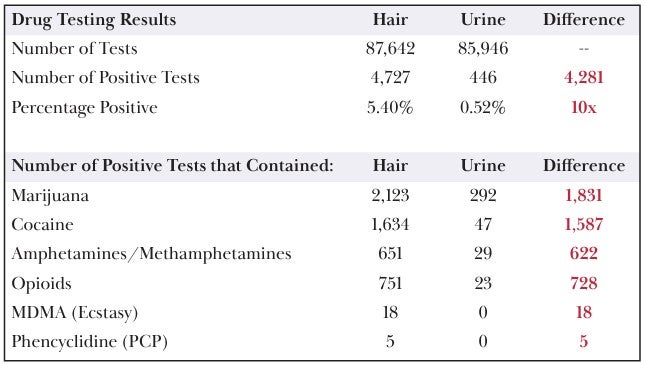Freight News:
Trucking group: Study supports greater use of hair tests for drivers
The latest update to a multiyear study commissioned by 10 major trucking companies concludes that urinalysis is missing 90% of habitual drug use among truck drivers.
The Trucking Alliance-backed study is based on drug test results of nearly 1 million drivers between 2017 and 2022. Testing for drugs using hair samples detected 25 times more opioid users than testing through urinalysis, 23 times more cocaine users, 13 times more amphetamine/methamphetamine users and five times more marijuana users, among other drugs. The results “underscores the prevalence of ‘hard’ drug use among drivers,” the study asserts.
The study also found that hair tests yielded more positive drug tests across all drugs for every age group and every state.
The Trucking Alliance points to the results as evidence that the U.S. Department of Transportation should be allowing hair testing as a stand-alone option for weeding out potential drug abusers as part of preemployment screening.
“This study concludes that our family and friends are driving alongside thousands of truck drivers who use illegal drugs,” said Trucking Alliance Managing Director Lane Kidd. “If airline pilots had similar drug test data, all planes would be grounded.”
2022 pre-employment drug screen results

Doug Voss, one of the study researchers from the University of Central Arkansas, said the study provides ample evidence supporting the effectiveness of hair testing for drugs in trucking, given the large sample size and the disparity in positivity rates between hair and urine testing for various drugs. “At some point it’s like arguing whether the sun will rise tomorrow,” he said.
The study notes that federal regulators do not currently allow carriers to submit hair test results to the Federal Motor Carrier Safety Administration’s Drug and Alcohol Clearinghouse without a corresponding positive urine or saliva test. That means carriers who choose to administer hair tests voluntarily as a safety precaution are at a cost disadvantage to other companies due to additional testing expenses.
“Further, drivers who fail a hair test can go to work for a carrier that only employs urine testing without completing the federally mandated rehabilitation process,” the study points out.
Previous research by Voss and his colleagues found that if all truck drivers submitted hair drug tests to FMCSA, an additional 276,500 drivers would be prohibited from driving.
Allowing hair testing as an accepted method to screen for drugs has been widely unpopular among owner-operators. The Owner-Operator Independent Drivers Association has consistently opposed its use by federal regulators, citing costs and a lack of safety evidence.
Asked to comment on the latest study commissioned by the Trucking Alliance, OOIDA questioned the research behind it, contending that previous studies backed by the group supported false narratives in the hair-testing debate.
“We suspect these latest findings are the result of more dubious research,” OOIDA said in response. “They’re probably hoping no one takes a closer look, but that’s exactly what OOIDA will do to expose the flimsiness of their claims.”
OOIDA also pointed to recent confirmation by the U.S. Department of Health and Human Services of its plans to reissue the hair testing guidelines as a proposed rule rather than a final rule as evidence that there “are still unresolved scientific and technical questions for this method of drug-use detection.”
HHS’ latest proposed guidance is expected shortly.
Related articles:
- Hair drug-testing guidelines sent to White House
- Truckers’ positive drug tests up 18% in 2022
- Legal marijuana may lower rate of truck accidents, new research says
Click for more FreightWaves articles by John Gallagher.
The post Trucking group: Study supports greater use of hair tests for drivers appeared first on FreightWaves.
Source: freightwaves - Trucking group: Study supports greater use of hair tests for drivers
Editor: John Gallagher